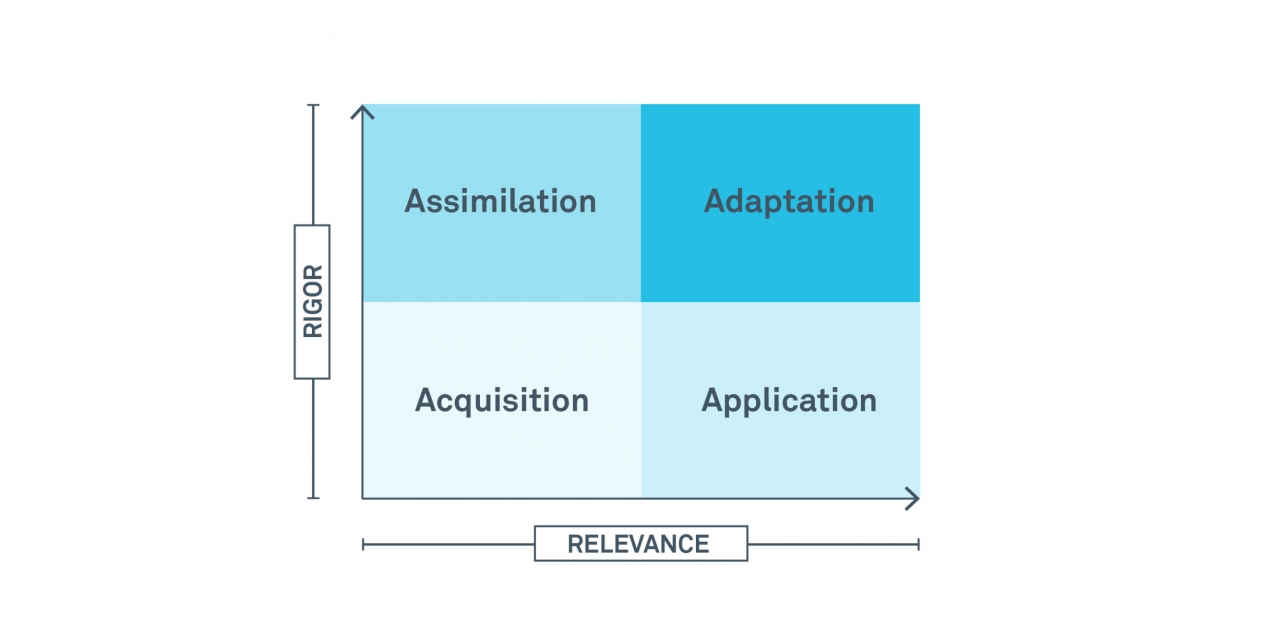The Rigor/Relevance Framework®
Dr. Daggett introduced one of the most well-known diagrams from the ICLE, the organization he founded and chairs. Called the Rigor/Relevance Framework®, this matrix asserts the following:
-
That low rigor/low relevance education allows for knowledge acquisition, or recall and basic understanding.
Best suited for: Standardized testing -
That low rigor/high relevance education allows for knowledge application, or basic understanding and solving real-world problems.
Best suited for: Career and Technical education -
That high rigor/low relevance education allows for knowledge assimilation, or higher levels of knowledge and analysis.
Best suited for: College prep and advanced placement courses -
Lastly, that our education model should strive for high rigor/high relevance, which allows for knowledge adaptation, or high levels of knowledge, and creative, complex analysis to solve real-world problems.
Best suited for: Career readiness in an internet age
In fact, an adaptive education model is a hallmark of what Dr. Daggett calls “Future-Focused Schools,” or schools that are moving away from test scores and focusing more on the delivery of a curriculum that is applicable to a job market five or more years away.







